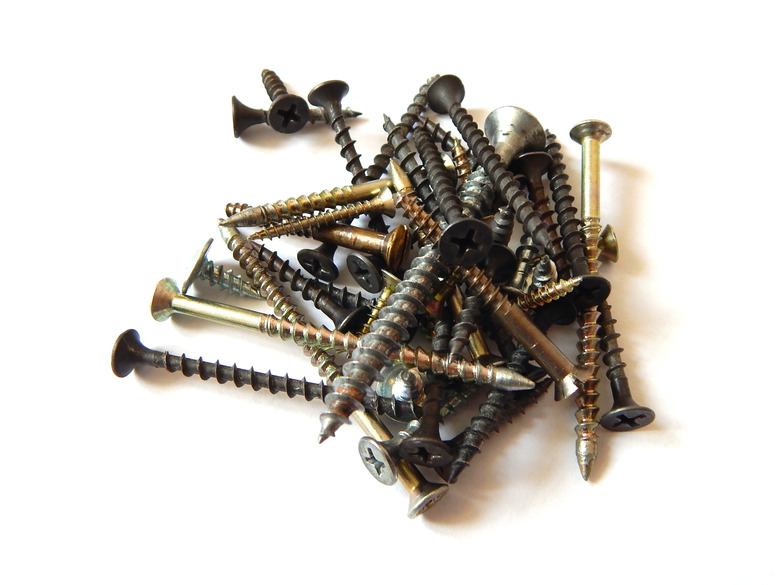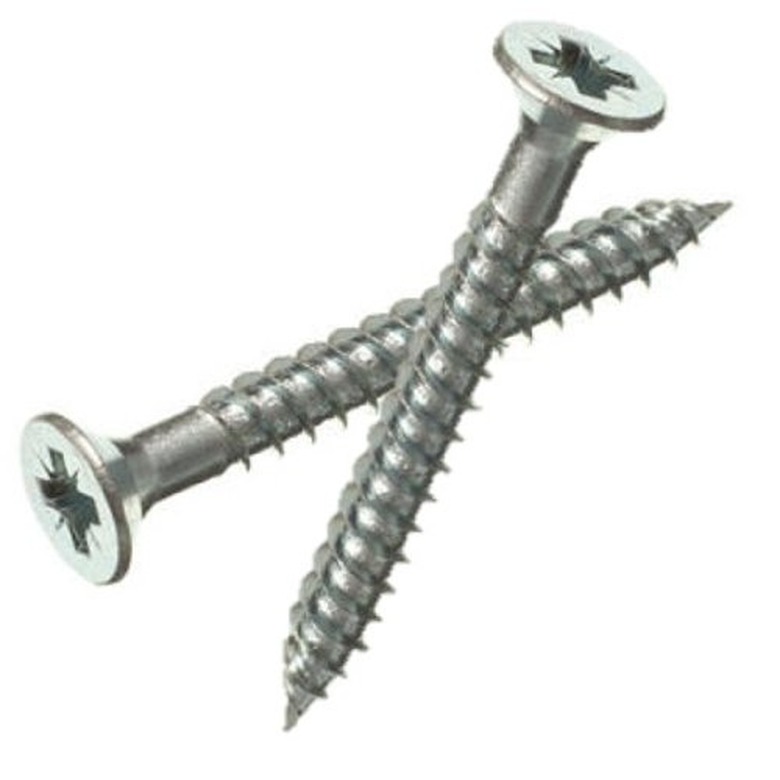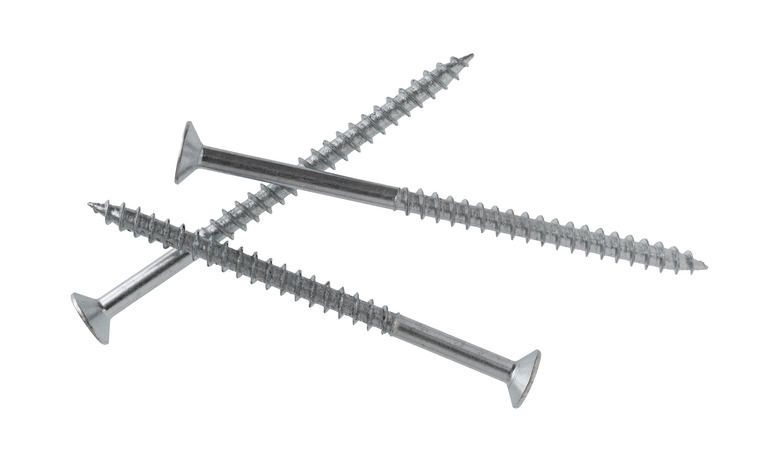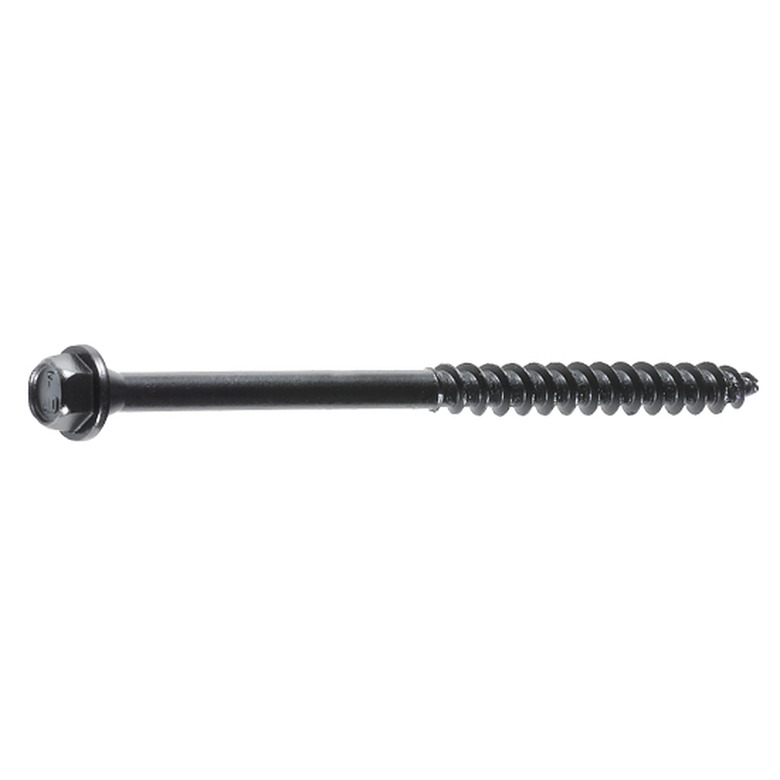Different Types Of Screws
If a handyman from a few generations back were to visit a home center or hardware store today, he would surely be amazed at the great variety of screws on offer. He might also be surprised to learn that the average homeowner is much more adept at using a drill-driver than a hammer. In his day, houses were put together mostly with nails. And while nails are still used for most framing, roof shingles and trimwork, pretty much everything else these days seems to be joined with screws. Accordingly, there tends to be a screw for every type of job, and if there isn't one yet, you can rest assured someone is working on it.
Screw Materials
Screw Materials
Most screws are made with some type of steel that is coated for various performance characteristics. For example, galvanized screws for outdoor use have a coating of zinc for rust-resistance. Deck screws and timber screws often have proprietary (as in secret formula) coatings specific to the manufacturer. Some screw materials are inherently corrosion-resistant, including stainless steel and solid brass. These solid-material screws typically outperform coated screws because there's no protective coating that can wear off or become damaged through use.
Screw Sizes
Screw Sizes
Screws are sized by their length and their diameter or gauge. Diameters are given in inches or millimeters; gauges are given in gauge numbers. Common gauge sizes range from #1 (5/64 inch) to #20 (5/16 inch). Screw length is measured in two different ways. With wood screws, drywall screws, deck screws and other types that are driven flush (or deeper), the specified length is the total length of the screw. With sheet metal screws and lag screws—where the head remains on the surface of the material—the length is taken from the screw tip to the underside of the head.
Screws often have two numbers indicating size. For example, a #10–3 1/2-inch screw is 3/16 inch in diameter and 3 1/2 inches long.
Screw Threads
Screw Threads
All screws have threads, the spiraling ridges that pull the screw into the material and grip it tight. Screw threads are categorized in several different ways. Some threads are simply described as coarse (meaning fewer, deeper, more aggressive threads) or fine (meaning the threads are shallower and closer together). Threads may also be specified by the number of threads per inch, or TPI, or by the thread pitch, the distance between neighboring threads.
TPI typically is used for screws with imperial (inch) sizing, while pitch is typically used for metric sizing. They are the inverse of each other but they essentially mean the same thing. A 20-TPI screw has 20 threads per inch and a pitch of 1/20 of an inch, or 1.27 mm.
Screw Head Shape and Drive Type
Screw Head Shape and Drive Type
There are dozens of common screw head shapes, from the bugle head of drywall screws to the pan head on sheet metal screws to the nut-like hex head on lag screws. Each head shape has a specific purpose, such as the small, sleek finishing screw head, which is designed to sink into wood as inconspicuously as possible.
Head shape should not be confused with drive type. Drive type tells you what you should use to drive the screw. Everyone knows about slotted and Phillips screws, but those are as ordinary as vanilla and chocolate. These days there are many more flavors, including square drive (Robertson), Torx (star), hex and Pozidrive (an improvement on Phillips). All the different types are not there to confuse you or to make you buy more tools (even though you might have to); they're there because they work better—either in general or for a specific screw type—than slotted or Phillips drives. And all of the "newer" drive types are gripped better by the driver bits (and slip less) than do slotted and Phillips screws.
Be aware that every drive type comes in different sizes. For example, the most common size of Phillips drive is #2, but large screws may use a #3 screw tip, and small screws call for a #1. Using the wrong size of screw tip or driver makes it very hard to tighten or remove a screw without stripping the head.
Common Screw Types and Their Uses
Common Screw Types and Their Uses
Choosing the right type (and size) of screw helps ensure the screw will go into the host material properly and will hold securely. It also ensures the screw will last a long time and will look like it's supposed to. You wouldn't use a sheet metal screw on wood furniture, just as you wouldn't use a wood screw in concrete. Because they hold everything together, screws can be just as important as the material they're going into.
- Wood screw: Primarily designed for finish work in wood; medium to coarse threads and usually with a smooth portion of shank under the head that allows the screw to slip through the top material while the threaded portion bites into the mating material below; commonly with a flat head but also available with a variety of decorative head shapes.
- Drywall screw: Designed for fastening drywall to wood or steel framing; bugle-shape head drives slightly below the drywall surface without breaking the surface paper; inexpensive, versatile and useful for a range of practical (not fine) projects; not suitable for outdoors or where strength matters (they're relatively weak and brittle).
- Finishing screw: Use in place of finish nails, such as for fine trim and woodwork; sleek, rounded head buries itself into the wood, leaving a small hole behind; small head requires a square or Torx drive (make sure to get the right size of tip/driver).
- Deck screw: Primarily for fastening wood decking boards; similar to wood screws, with a smooth portion of shank, but usually with a skinnier shank and always with coarse threads; bugle head helps screws to countersink into softwood decking; must be stainless steel, galvanized or specially coated for corrosion-resistance.
- Lag screw: Heavy-duty structural screw for wood; hex head driven with a driver or socket wrench; most commonly used for outdoor projects, such as fences, decks, playground equipment and garden structures; often used with a washer under the head for added strength and a clean-looking installation.
- Timber screw: Up-and-coming screw type used in place of lag screws, common (structural) nails and framing anchors in various structural applications; long and strong, with coarse threads and a hex head for driving power.
- Sheet metal screw: Designed to secure all types of thin metal; available with many different head shapes and thread types; short, hex-head screws are used for metal gutter parts; types with pan heads or oval heads offer a finished look; self-drilling types have a drill-bit tip; will hold in wood but not as effectively as most other screws.
- Machine screw: Technically a bolt because it has a blunt (not pointed) tip; used with nuts or in threaded holes or inserts; fine threads; usually used for joining metal or plastic to similar materials or to wood (when used with a nut or insert); not suitable for driving into wood.
- Multi-material screw: Also called construction screw; expensive and highly engineered to hold in a variety of tricky materials, such as plastic, masonry, plywood, MDF (medium-density fiberboard) and particleboard; special serrated threads drive into material with minimal tearout; useful for difficult applications, such as screwing into edges of plywood or for assembling particleboard cabinet boxes or furniture parts.
- Concrete screw: High-strength coated screw with special "hi-low" threads for driving and gripping in concrete and other masonry materials; hex head (for surface installation) or flat head (for flush installation); requires a proper size of pilot hole; useful for fastening anchors and most materials to concrete, brick, concrete block, etc.




